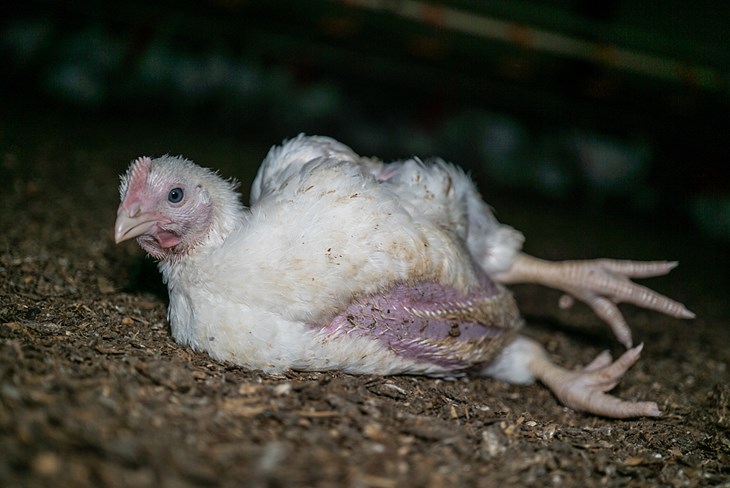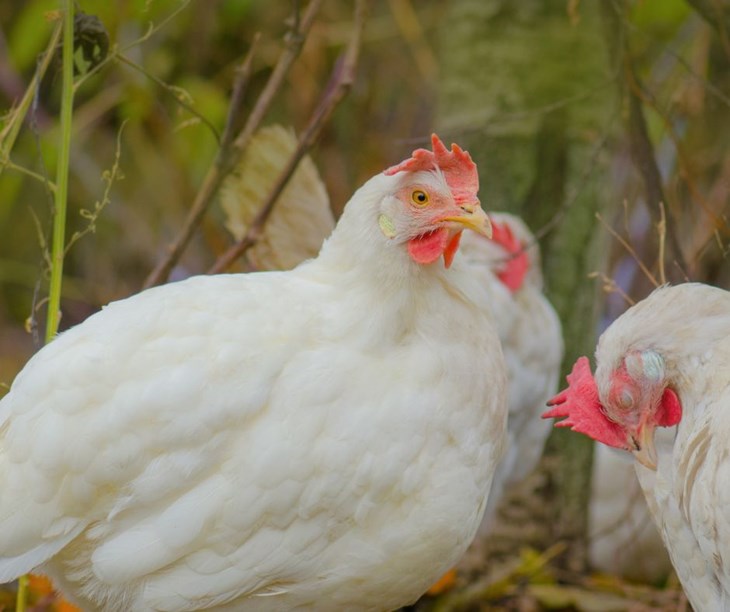3/7/2024
by Julia Johnson
In the pursuit of a more sustainable and ethical future, the relationship between animal welfare and carbon emissions has become a central focus of discussion. How do companies balance the need to ensure a better life for chickens while decreasing their environmental impact?
Impact Mitigation Strategies for Higher-Welfare Broiler Production
A recent paper commissioned by Compassion in World Farming, titled “Impact Mitigation Strategies for Higher-Welfare Broiler Production,” delves into this complex interplay, offering insightful strategies to reconcile these seemingly conflicting objectives. This research not only highlights the pressing need to address both animal welfare and environmental sustainability but also presents viable pathways for achieving this delicate balance.
The intensification of how chickens are raised for meat reveals shocking welfare concerns, not granting billions of birds a decent quality of life. Birds are overcrowded in dirty, dark barns and genetically selected to grow so fast that many cannot even stand up due to the weight of their bodies. Improving chicken welfare within the poultry industry is necessary to create a more humane food system, as it aligns with ethical considerations and consumer expectations.

But while giving birds more space and switching to a healthier genetic strain are welfare improvements, this could lead to needing more chicken houses to produce the same amount of meat, raising environmental concerns related to crop production and energy usage. Striking a balance between these imperatives is crucial for fostering a more sustainable and humane approach to chicken production.
Where Welfare and Sustainability Meet
This paper assesses the incremental environmental impacts of raising higher-welfare broiler chickens and how they can be mitigated. It draws upon peer-reviewed life cycle assessments and other published research to estimate what it terms the “emissions gap” between conventional and higher-welfare systems.
There are nine strategies for decreasing the greenhouse gas emissions of broiler production. These strategies encompass upstream, on-farm, and downstream impacts. Seven of the nine strategies reviewed have quantified decarbonization benefits – indicating that the emissions gap between higher-welfare and conventional broilers can be narrowed or even eliminated.

“Impact Mitigation Strategies for Higher-Welfare Broiler Production” offers a comprehensive roadmap for navigating the complex nexus of welfare and environmental concerns in the context of chicken production. By embracing innovative solutions, leveraging synergies between objectives, and fostering consumer engagement, it is possible to forge a path toward a more sustainable and ethical food system. This research serves as a timely reminder of the urgent need to reconcile competing interests and work toward holistic solutions that benefit animals, the environment, and society as a whole.
You can read the Working Paper here: Broiler Welfare Working Paper | The New Green Normal

